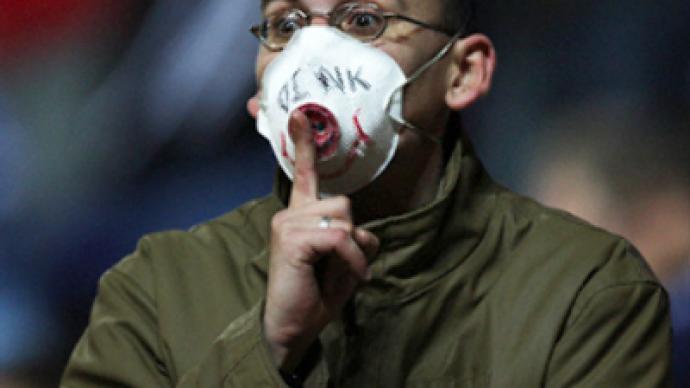The reality behind the swine flu conspiracy

The message is clear – we are all going to die from swine flu. It spreads fast, it is dangerous, and it must be feared – says the World Health Organization.
But worry not – there is a way to save yourself. Just get a flu shot – and purchase a remedy for the deadly virus. Those are the instructions from the WHO.
However, the WHO may find itself coughing up explanations, as more and more scientists and health researchers, and even journalists, are starting to question the organization’s motives behind raising the alert so quickly.
According to the Danish Daily Information newspaper, the WHO and pharmaceutical companies are suffering from the profit bug. Or, to put it simply, the chief health care organization in the world has teamed up with the drug makers to create a phantom monster – and to rake in cash by selling a remedy for it.
Plastered all over the front pages and headlines news, swine flu made its triumphant entrance into limelight, heralded as the next “in” virus, which threatened to bring an end to humanity as we know it.
Let's stop right there and talk numbers for a little bit.
So far, more than 3.5 million people have been reported to be infected with swine flu worldwide. More than 9,000 deaths have been confirmed.
In comparison: every year, up to one billion people get infected with seasonal flu, with up to 500,000 deaths. These numbers come from the World Health Organization, but they never make headline news for some reason.
On June 11 of this year, the WHO declared swine flu a pandemic. But few know that, right before doing that, the Organization changed its definition, taking out the word “deadly” from it.
Aleksander Saversky, the chair of the Patient's Rights Protection League, was one of those who did pay attention. He says it is clear that the WHO dramatized the situation around the H1N1 virus. In an interview to RT, Saversky speculated that it is due to the WHO's close ties with the world's major pharmaceutical companies.
And recently, Danish journalists conducted their own research, which resulted in accusations that the WHO, and scientists who appear to be independent are, in fact, on pharmaceutical companies' payroll.
Saversky points out that the WHO declared the status of pandemic when only a few thousand people were infected with it – something that is highly illogical, he says, considering the hundred thousand more cases of seasonal flu never gets paid such high attention.
The virus was reported to be extremely deadly. Parallels were drawn to the Spanish Flu, which killed roughly 50 million people worldwide in the span of six months.
As panic spread, people rushed to clinics for Tamiflu – $145 a pop and by prescription only in the US – and for vaccinations, which range anywhere from $10 to $50. And despite the fact that many have lost their jobs in the financial crisis, and were left without health insurance, vaccinations and pharmaceutical sales skyrocketed. Nobody wants to die a grisly death from the supposedly new virus.
Aleksander Saversky warns the hullaballoo over swine flu is akin to the fable of “The Boy Who Cried Wolf.” He says that, because of this hype, the next time a truly dangerous virus comes about, no one will take any precautions. Fooled once already by swine flu, people will ignore the warnings and fall prey to a more dangerous – and deadly virus.
In fact, vaccinating people from swine flu during the seasonal flu outbreak, in Saversky’s opinion, is criminal. People end up having to battle two viruses at the same time, which puts an enormous strain on the immune system.
Saversky puts the blame on capitalism – pharmaceutical companies make billions on people's fears, combined with asymmetrical information dispersal (meaning that most people know very little substantial information about the virus, whereas the WHO, pharmaceutical companies and researchers know a lot more).
So, what's to be done to conquer the virus – and stop the WHO?
Saversky says there is one solution – for governments worldwide to step in and take matters into their own hands, by controlling healthcare and pharmaceutical production.
Until that happens, however, remember to check for all common flu symptoms. And should a general disinclination to work of any kind be among them, rest assured – it is most probably a run-of-the-mill case of the Monday Blues.
Irina Galushko, RT












